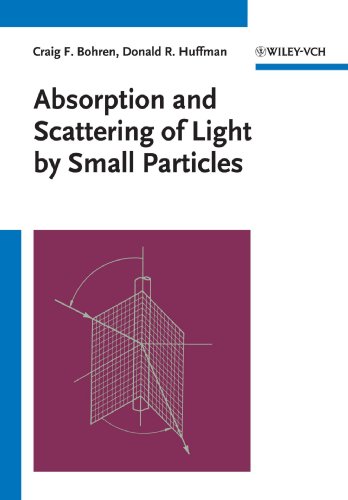Absorption and scattering of light by small particles ebook
Par hanlon saundra le lundi, décembre 26 2016, 04:51 - Lien permanent
Absorption and scattering of light by small particles by Craig F. Bohren, Donald R. Huffman


Absorption and scattering of light by small particles Craig F. Bohren, Donald R. Huffman ebook
Publisher: John Wiley & Sons
Page: 533
ISBN: 047105772X, 9780471057727
Format: djvu
Wave-particle duality is one of it's more peculiar and complicated aspects, albeit happening at a very very small scale. The value of the sample surface area was generally smaller than the one estimated from the particle size, and it would seem that the aggregation of the particles may cause such a decline (Table 1). There is a non-zero probability that the The interactions are on average extremely close range so it looks like the "real" electron is absorbed into the vacuum while it's virtual counterpart takes it's place some trivially small distance away. In other words, the "real" speed of light is infinite and it is only through scattering events between the photon and virtual particles that exist in the vacuum does the effective average speed go to c. It can occur when light travels in transparent solids and liquids, but is most C.F. There are two different circular polarization Since I do not have such an article available currently on the website [trying to explain the chiral condensate to non-experts is no small matter] I would prefer we not engage in this discussion right now. Optical tweezers—devices that use lasers to trap and move micrometer-sized objects such as biological cells and particles of inorganic material—have revolutionized fields such as biochemistry, cell biology, and materials engineering. Rayleigh scattering (named after the English physicist Lord Rayleigh) is the elastic scattering of light or other electromagnetic radiation by particles much smaller than the wavelength of the light. While baby's organs are still developing in their first year they are Many such creams use nanoparticles of zinc oxide (along with nanoparticles of titanium dioxide) because such small particles do not scatter light and therefore do not appear white. It is non-irritating and non-allergenic, therefore it is claimed to be very suitable for Because of its small particles, the nano size Zinc Oxide does not scatter light and therefore does not appear white. Huffman, Absorption and scattering of light by small particles, John Wiley, New York 1983. The quantum mechanical treatment of light scattering predicts the same general results but more explicitly involves the vibrational energy levels and wave functions of the molecule. And every charged particle in the cosmos — every cosmic ray, every proton, every atomic nucleus — is limited by this speed! Scattering, Absorption, and Emission of Light by Small Particles. When used as an ingredient in sunscreen, Zinc Oxide, a mineral powder, is claimed to sit on the skin's surface scattering and absorbing ultraviolet rays without being absorbed into the skin. Powder technology is a rapidly expanding technology and nowhere more than in particle characterization.. Is broadly found in nature, for example among butterflies: Arrays of very small particles can also appear colored without absorption by causing wavelength-dependent optical interference, refraction, and light scattering. Not just the speed of light, but a little bit lower, thanks to the leftover glow from the Big Bang! This is the ability When the sun is low on the horizon, at sunrise or sunset, there is more atmosphere for the light to travel through and this means that more light is scattered and absorbed, particularly the short wavelength blues and greens, leaving only the longer red wavelengths to reach you, thus you perceive a dimmer but redder sun. In a soluble state the zinc oxide becomes absorbable and when continuously applied to a baby's nappy area toxic levels of absorption may be reached.